Have you ever found out that a guppy soared out onto the floor after what seemed to be a peaceful night? Unfortunately, aquarium fish can decide to jump for many reasons.
While a secure lid is the best cure for this problem, jumpers can still be injured from the attempt.
So why do fish jump out of the tank, and how can we prevent this?
Sudden Fright
A frightened fish is a fish that is very likely to jump, especially in an aquarium where there are few hiding places. Fish know to jump because it is an excellent way to escape predators.
A smaller fish being pursued will shoot up to the surface, which has a refractive index that is different from the surrounding water. By leaving the water, their pursuer loses sight of their prey entirely.
While the fish jumping comes down close by, it often confuses the chaser long enough for the prey species to escape!
Fish and Aquarium Lights
Another common cause of fright is suddenly turning on and off the aquarium lights. Major shifts in lighting trigger danger cues in fish because normally, this would signal a predator is overhead.
A sudden shadow or revealing light means that they are exposed and vulnerable. Fish will often dash or even leap when the light levels are changed.
Therefore, one way to stop fish from jumping is to slowly turn on and off the aquarium lights. Some even have built-in settings or timers. These allow the light levels to be gradually ramped up over the course of a few minutes or hours, just like true morning and evening!
Fish that Tend to Jump when Frightened
There are a few species of fish prone to leaping out of the water frequently. Any fish in the Characiformes group tend to be very skittish, especially when kept alone. These are mostly Tetras but also include their larger cousins like Silver Dollars, Pacu, and even the fearsome Piranha.
In fact, Piranhas are infamous among aquarists who have kept them for their nervous personalities. Any sudden movements around their tank may cause them to dash into a favorite hiding place, against the decoration, or straight out of the water!
Some other skittish fish include Dennison’s Barbs, Giant Danios, Rainbowfish, and many fast, schooling fish that rely on speed and numbers to escape predators. And in the ocean world, there is the world-famous Flying Fish, which leap and use their pectoral fins to glide across the water.
Hatchet Fish actually evolved to occupy a similar niche, by the way! They are shaped like hatchets because they have massive pectoral muscles in their chest that help them not only glide but actively flap when fleeing predators!
So it goes without saying that a well-fitting lid is mandatory when keeping these freshwater flying fish.
Floating Plants and Fish Jumping
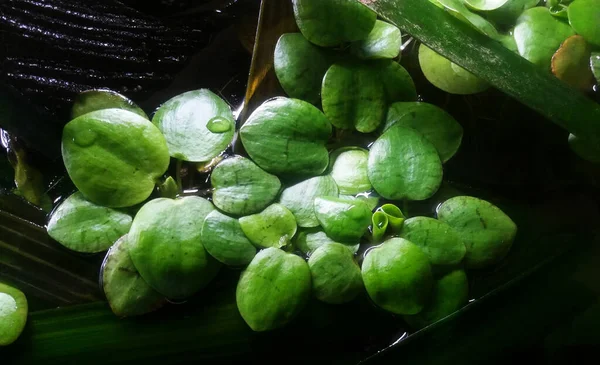
Unfortunately, decorations near the surface can also make it more likely that your fish jump if startled. Since floating aquatic plants break up the boundary between the water’s surface and the lower layers, a fish may think it’s heading for a safe thicket. Instead, the fish ends up rocketing right out of the tank!
Therefore it’s a good idea to remember that fish require hiding places to feel secure. And paradoxically, the more hiding places you offer them, the more often your fish are likely to stay out in the open.
Fish that feel safe, knowing that secure hiding spots are only a body length or two away, will be bolder about swimming freely. And it certainly won’t bother jumping if it can hide in plants or behind some driftwood instead!
Living With an Aggressive Tank Mate
Another reason fish may abandon their tank water is that they were forced to. Aggressive tank mates may be so pushy that subdominant or peaceful fish may treat them like a predator by leaping.
Cichlids are infamous for being antisocial towards one another and their tank mates. Many of the larger Gouramis and Killifish will also treat their tank mates poorly, chasing them around.
Your Fish Tank is Too Small
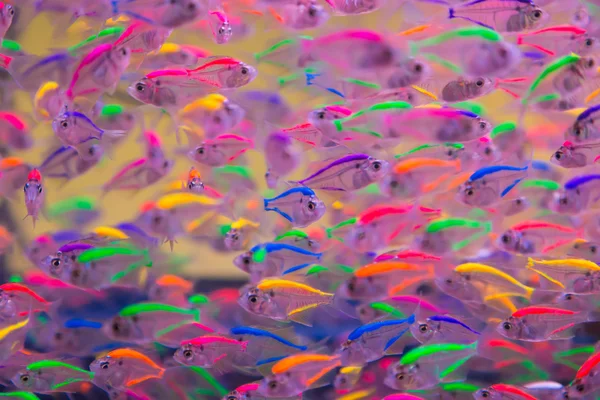
Even if your fish aren’t living alongside aggressive tank mates, your aquarium may have too many fish. Many fish are social and will react to others kept in too close a proximity. Even asocial fish will feel stressed when kept cramped alongside other fish, which may decide to pick at them.
Fish of many different species kept together will also have a hard time reading the signals given by other species of fish.
For example, an aggressive tankmate may decide that an entirely unrelated fish is a rival because it has similar colors or holds its fins erect in a threatening way. And, more rarely, a fish may decide that another entirely unrelated species is a mate to impress.
Whether your tank is too small, you have aggressive fish living alongside peaceful ones, or both, more space in your tanks is the best answer for both problems!
Surface Dwelling Fish Species
Believe it or not, many fish actually have natural jumping behavior. Several common aquarium fish tend to live near the surface of the water. Here they can watch for insects that fall onto the water’s surface.
Many other fish take this a step further and will jump out of the water to catch small animals that land on tree branches and leaves near the water’s surface.
Surface-dwelling predatory fish jumping for food means that you absolutely need to have a hood, lid, or other covering on your tank at all times. It only takes a couple of minutes of inattention to end up with a dried-up and dead fish on the floor of your home.
Common Tropical Fish that Jump
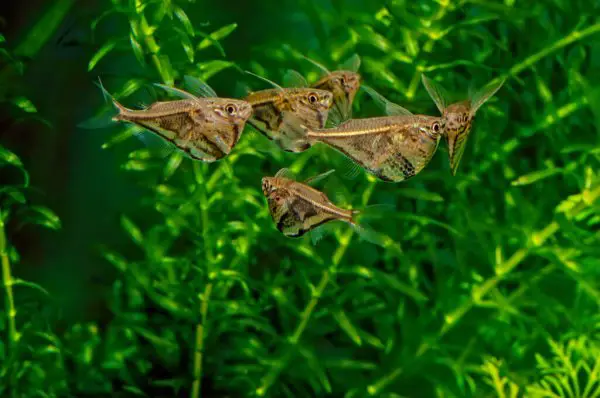
Tropical fish whose natural behavior is to jump for prey include Arowanas, Archerfish, Hatchet Fish, and African Butterflyfish. Many species of surface-dwelling fish may not jump for food but simply hanging around near that region makes them more likely to jump. This includes Killifish, Guppies, and other small fish.
You can often identify surface-dwelling tank inhabitants by their basic body plan. Surface dwellers tend to have an upturned mouth and a flat top of the head and back, sometimes as far as the dorsal fin.
Betta fish and Gouramis also have this body plan because they live in shallow water and come to the surface continually to breathe air. While they swim in all levels of the water column, these are classic indicators of a fish that evolved to spend a lot of time near the surface!
Nocturnally Active Fish
Do you have fish that only come out at night to explore? These fish are much more likely to jump from tanks when the lights go out. Usually, these fish don’t intentionally end up jumping from the tank. Instead, they slither, eel-like, from the water’s surface.
Many of these fish have adaptations for nighttime wandering. They may have the ability to breathe air for short periods by respiring through their skin, stored water pouches, modified swim bladders, or some other breathing organ. The cool air and lack of daytime land predators make wandering at night not so dangerous.
Fish That Are Very Active at Night
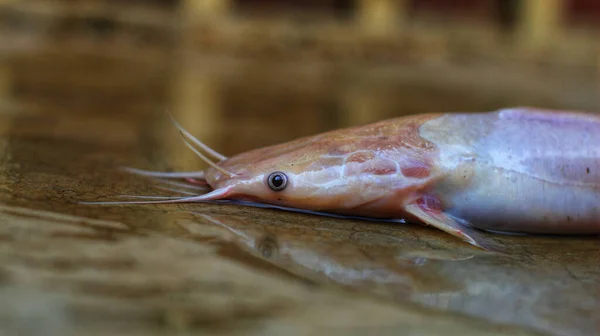
The natural environment of many of these fish makes it safe for them to wander around and above the water’s surface at night.
These fish will commonly swim right along the water’s surface, hunting for holes and loose points in the lid. If they can, they will push their way through, which may end up with them falling to the floor.
Some fish well known to be nocturnal escape artists include Moray Eels, Knife Fish, Snakeheads, some Catfish, and Spiny Eels. These fish can slither in between ponds, staying moist in mud and cool grass for minutes to hours, even days at a time.
Low Oxygen Levels
This last reason doesn’t directly lead to fish jumping out of the aquarium water. After all, it’s not like many can breathe air (even though air does hold 100 times as much oxygen as water).
However, a lack of oxygen will lead to your fish crowding near the surface. They do this because this is the place in your aquarium where oxygen levels are highest.
The air is saturated with oxygen, and it will diffuse slowly at the surface into your fish tank. However, if something is causing it to be used up too quickly, they will begin to suffocate from the lack of oxygen.
Since your fish are hanging near the surface for more oxygen, they are more susceptible to the conditions I’ve laid out earlier. If startled by you or a tank mate, they may jump out of the tank instead of diving deeper.
Conditions that Affect Dissolved Oxygen Levels

The water temperature is a major influence on how much dissolved oxygen your tank water can hold. Warmer water holds significantly less oxygen than colder water does.
So it’s best to provide water conditions that are just warm enough without going over since an incorrect water temperature means less oxygen. Especially if you have a heavily stocked tank, which means more fish breathing in what little is available.
Water circulation also makes a big difference. By ensuring water from the surface turns over into the middle and bottom levels of your fish tank, you’re less likely to see fish hanging around near the surface trying to breathe properly.
Lastly, high levels of fish waste, leftover food, and other organic debris will cause oxygen levels to drop. This comes from aerobic bacterial decomposition. The word aerobic means that these germs take in oxygen to do their work.
If you already have lower levels and little circulation, any leftovers that haven’t been removed can cause oxygen levels to become dangerously low. This leads to your fish hanging around near the surface, which can then lead to an accidental fish jump. So keep an eye on your water quality and remove any decaying plants or uneaten food.
Conclusion
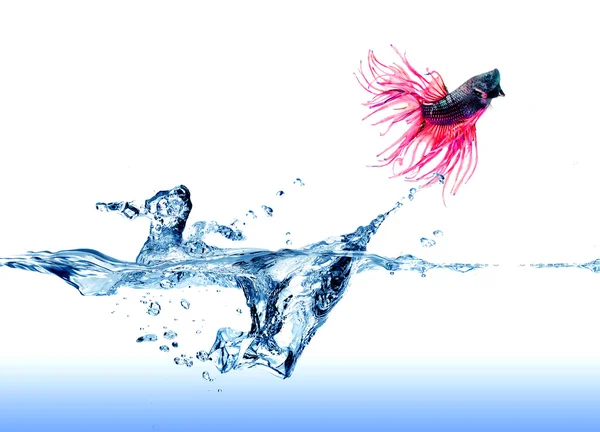
Why do fish jump out of the tank?
There are many reasons for this. Fish jump for prey and to escape being prey. They jump if they are startled while trying to get more oxygen.
Fish jump if an aggressive tankmate makes things too hard for them. And many nighttime explorers may accidentally jump while trying to find somewhere new to visit.
Now that you understand fish jumping behavior, you should have some ideas on how to keep your fish from jumping. Good decorations, peaceful tank mates, freshwater, and good light discipline can all help keep your fish feeling secure and at ease in your tank!

